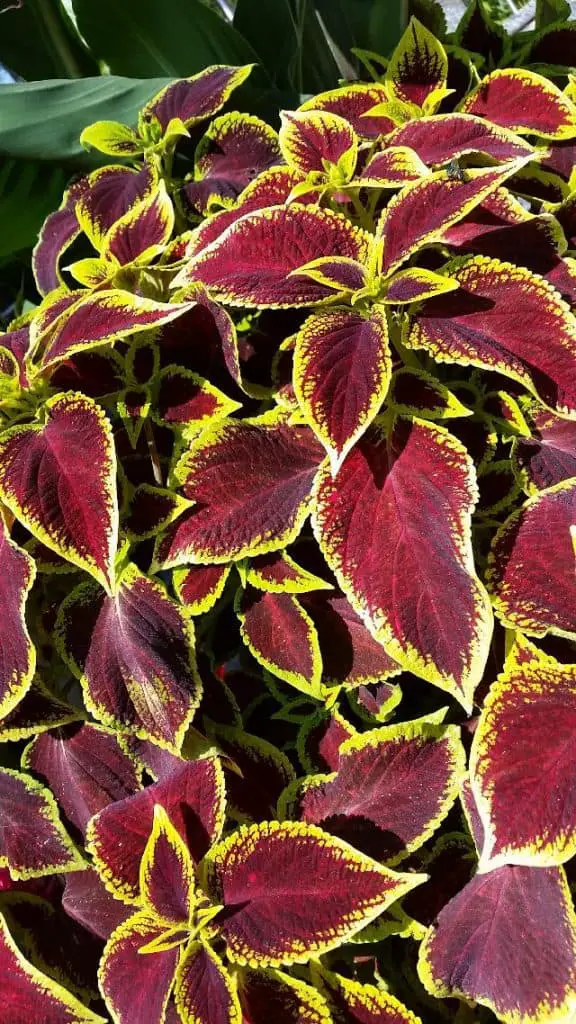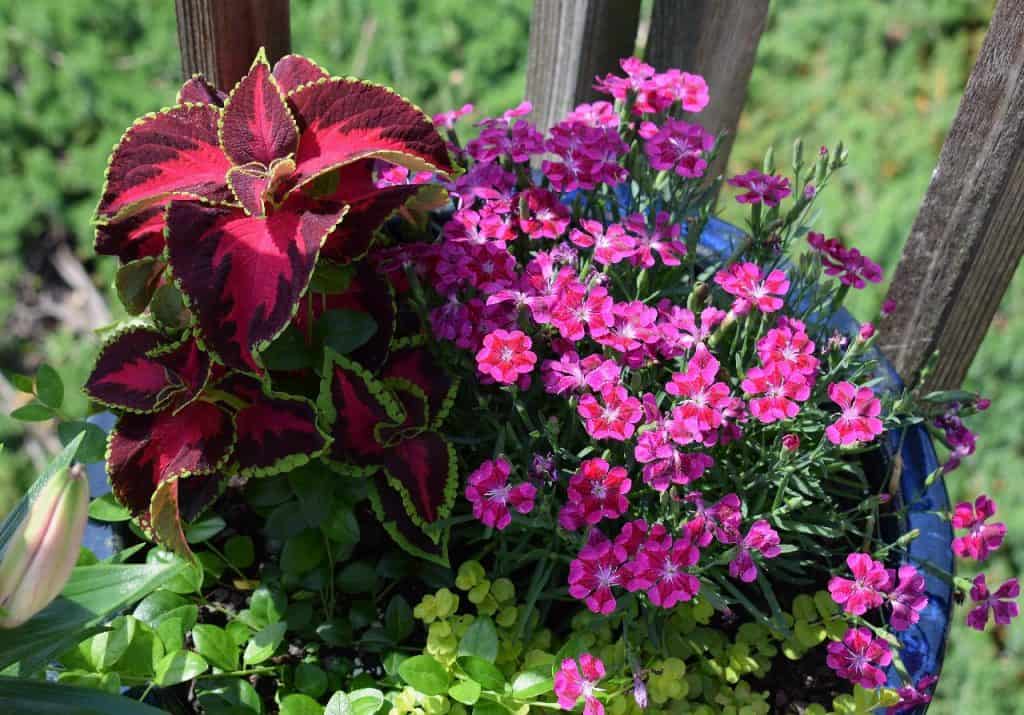Coleus plants fill your garden with magnificent and brightly colored foliage of different patterns and combinations. They are also the easiest to propagate through stem cuttings from a robust mother plant. Now, let us address the question of whether it is annual or perennial.
Coleus is a perennial plant grown on the ground for several years in warmer climates or those geographical locations in the USDA hardiness zone 10 and warmer. Moreover, these colorful, tender tropical plants can’t survive even the lightest frost. As a result, they are mistaken for annuals when the first frost of autumn kills them.
How long do coleus plants live?
In a tropical climate where they originated, coleus plants can live and thrive for several years. A gardener’s best advice is that when their lavender flowers blossom during their growing season, you must pinch them to redirect the plant’s energy to produce more brightly colored leaves instead of seeds.
The reason for this is flowering signals the end of the plant’s life cycle. Typically, plants die after producing flowers that provide seeds. Of course, you don’t want any of that to happen if you would love to continue enjoying your coleus plants.
On the other hand, if you grow them in a location with colder climates that experience winter, the first frost of autumn will kill them when they are planted on the garden beds or outdoors.
Now that we have established that they are perennials and sensitive to frost, there is still a way to enjoy them year after year, even during the snow season. Continue to read and find out how you can overwinter your favorite coleus plants.
Can you keep coleus over winter?
Coleus can be grown in pots indoors over winter. This low-maintenance plant can easily be propagated through stem cuttings. Now, if they are planted outdoors in garden beds, prune your coleus plant before the first frost falls.
In the next section, I have included the step-by-step process of how you can grow coleus from stem cuttings and sufficiently care for them during the colder months.
How do you keep coleus plants over winter?
As mentioned, coleus can be kept over winter indoors in pots. They thrive well in potted conditions with appropriate care. In addition, you can choose to overwinter them in a greenhouse, inside your house, or a garage.
If you initially planted your coleus in a pot, bring the whole plant indoors after removing all the bugs and pests from them. The best time to get your plants indoors to overwinter them is two weeks before the first frost date after autumn.
If you grew your coleus on the ground, you could follow these steps to keep them indoors:
- Make sure that your gardening shears are clean and sanitized with isopropyl alcohol or wipes. Unsanitized gardening tools can infect your plant with bacteria which consequently kills the stem cuttings.
- Pinch short cuttings of 2 inches (5 cm) from a healthy mother plant. An excellent time to get your stem cuttings is before it gets cold outside and the frost damages the plant. If the mother plant has been damaged, the cuttings from it may not root successfully.
- Plant the stem cuttings in moist potting soil. The soil must be kept moist and warm until the new plant is established. The leaves may droop or look wilted as they adjust to their new environment indoors. This is normal. It usually takes them a week of recovery.
- Maintain the warm temperature for your coleus plants. It should not go below 50F. Moreover, coleus loves the temperature range between 60-75 F.
- Keep them in the sunniest or brightest place. Supplement with grow lights if needed. Coleus plants lose their bright colors when they don’t get full sunlight. They fade and look lackluster when they are not given the appropriate light they need.
Does Coleus like sun or shade?
Coleus loves and tolerates full sunlight exposure.
My personal coleus plant collection includes 30 different colorful and vibrant varieties. A common observation is that their brightest and shiniest colors come out when basking in full sun.
Contrary to what most people say, I know, but I am writing this from the experience of growing my own coleus plants. My coleus plants are exposed to the hottest temperature of 104 F, and they thrive so well.
Sure they do just fine in the shade, but you wouldn’t see the array of their different colors and patterns. Instead, they’ll look lackluster and dull as time goes by.
Furthermore, they are water-thirsty plants, especially on a hot sunny day, so giving them adequate watering is essential for them to survive the hottest part of the day. Keeping their soil moist is the key to acclimate them to full sun.
Why are the Leaves on my Coleus plant scorching?
Scorching indicates that the leaves are not getting adequate water that suits their needs from the roots. What happens is the plant shuts down when it is exposed to too much heat.
The moisture in its leaves evaporates, which leads to drying up and scorching. The first sign of scorching is that the tip or edges of the leaves dry up or turn brown. This is the part of the leaf that is farthest from the roots and the first part to be dehydrated.
Another reason for this can also be that your coleus plant has been acclimated to a shady environment, and then you suddenly brought it out to the sweltering heat of the sun. They don’t like dry conditions.
Both of the situations can be corrected by giving your coleus plant sufficient watering during summer. This also applies when you harden them to full sun exposure.
Conclusively, coleus plants are perennials that can thrive for several years with the right growing conditions. You get to enjoy their eye-catching foliage throughout the year. This is possible because they can also be kept indoors to overwinter them.



